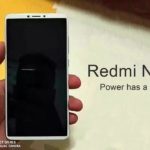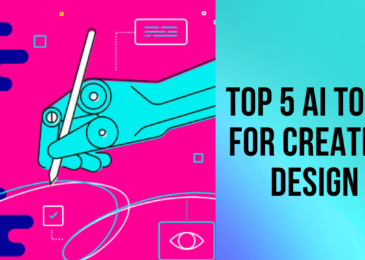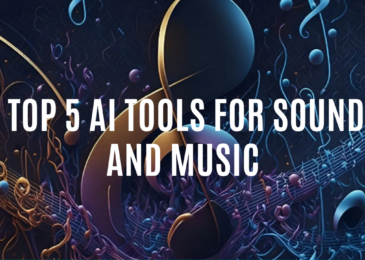The professional marketers know well how money-consuming can be spontaneous or impulse purchases. The impulsivity is an inherent part of the human nature. We all share this behavioral pattern more or less. A bar of chocolate displayed in a checkout aisle or an appetizing smell of coffee emanating from a Starbucks booth can push us to make a buy almost unconsciously. The hidden reason behind our decisions, the ulterior motive triggering us to fork out for something we did not plan to buy can vary significantly in each particular case.
With the help of the applied psychology, marketers are trying to figure out the causes of the impulse purchases. Those who can grasp the algorithm triggering the spontaneous purchases will be able to influence the consumer audience badly. However, every consumer is unique, and the reasons for purchases remain utterly personal. What can be said qualitatively regarding the issue is that whatever triggering event may occur, it should be very brief, forcible, and leaving no chance for deliberation. Otherwise, any purchase is not spontaneous.
The digital marketers should think over what means of communication, which marketing channel can correspond to the triggering cause of the impulse purchases best. Especially since there are not so many options to choose from.
When stomach uses memory
Before getting to select among available marketing channels, the understanding of behavioral patterns standing behind our impulsivity should be cleared up. What cultural phenomena influence us adjusting our mood? Writing everything off as purely physiological moves in our bodies is hardly reasonable. Even though wrenching stomach often forces us to buy a burger, it does not explain why we ignore the rest available food in favor of the burger.
The cultural input in the form of our implicit product attitudes pushes us to buy spontaneously selecting what we know well among the rest, less familiar alternatives. It works well when we are distracted, as some psychological surveys prove. Although “an empty stomach has no ears”, it probably has a memory to recollect the “Eat like a Man” or some other slogans of Burger King visualizing the familiar fast-food solution. By the way, the commercial slogans correspond well to the characteristics of the impulse purchase triggers.
Email is prose, not poetry
Here, we come closer to the channels that can potentially incentivize the impulse purchases. The content they deliver should have the mood-adjusting capabilities being rather brief at the same time. Can the in-email content play this role? At first glance, it seems that it can. However, the very method by which we open emails implies no spontaneity. Clicking our email clients we always expect to find quite definite types of content in email messages. The volume of email can hardly contain one-two sentences of text, especially when it comes to the so-called business-as-usual (BAU) campaigns.
The contemporary email marketing rightly uses the entire scope of numerous technical means creating emails as impressive as possible. Thus, we can expect embedded visuals, social media buttons, and different active elements, not to mention relatively big text blocks inside the messages. Of course, a creatively represented email content can stimulate some unplanned purchases under certain circumstances. However, such purchases imply rather significant and in most cases expensive goods requiring complicated purchase procedures. The time comes to a stage here, in the sense of both the purchase procedure duration and the period we need to open, read, and digest the in-email content. So, it is more about prose than poetry, more about rationality than spontaneity.
Haiku hints at the features
The development of human culture cannot be imagined without poetry. It reflects the tiniest vibrations of our souls. And it can influence our mood significantly – just recollect the songs that called people to fights and revolutions over the human history.
One of the most concentrated mood-adjusting poetry people invented is Haiku – the brief Japanese poems consisting of only three lines:
“After killing
a spider, how lonely I feel
in the cold of night”
(Masaoka Shiki, 1867-1902)
How can haiku relate to the spontaneous purchases? Since we are looking for a triggering marketing channel, haiku demonstrates what features should be inherent in the channel. Its content should be as concise as possible delivering some impressive idea capable of influencing the consumers’ decision making. So, what about push notifications?
Notifications aim at notifying mostly
App push notifications along with web push notifications offer a very flexible marketing tool having “armor-piercing” capabilities. They appear in our gadgets and desktop browsers suddenly catching our attention. Despite the variety of information push notifications can contain, their major function is to inform us about something, nevertheless. Thus, meeting the first requirement of the triggering content we are looking for (to be brief), push notifications remain questionable in their ability to impress us badly. Of course, a special type of push notifications when geo-tagged info about events happening nearby arrives to our smartphones can influence our behavior making us change our routes for visiting the advertised shops or restaurants. Although the open rate of push notifications is higher than the emails’ one, it is inferior to the channel we are approaching to in our search.
The king of messages
At its core, the open rate is none other than our trust to a communication channel. We can hardly ignore any info coming from the entity we appreciate. The entire history of the digital revolution emphasizes the means of communication which allows us to be omnipresent in the informational realm despite wherever we are actually at that moment. What can make a half of the global population to be always connected? What became an indispensable part of our identity? What do we keep in our pockets wherever we go?
A telephone is the killer of distance, the king of the contemporary communication, and the most influential channel we are listening to. If anything can push us to some spontaneous actions, it is the content coming from our phones. Since SMS corresponds to phones best in historical perspective, the content of SMS messages is the most familiar and trustful info for people. And the 98% open rate is the best proof of this.
How to create an outstanding SMS
It seems we found the communication channel which marketers can apply to incentivize consumers for the spontaneous purchases. At least two of the main three characteristics of such a channel belongs to SMS naturally – SMS messages are very brief being very forcible in their effect at the same time. Regarding the impressive content as the third feature the truly influential message must have, there are two aspects of the SMS creation to be considered.
Enablers for imaginary power
The first aspect relates to the very creativity of the marketers. It implies their ability to express a provoking call to action within a tweet-like brief message. A ready-to-use receipt can hardly be found here without applying the imaginary power of the marketers. Even though the sky is the limit in the creativity, the abundant experience of the great brands is always available on the internet to study. The motto and commercial slogans of the great brands, the successful exemplary campaigns of the famous companies, and the viral tweets of numerous celebrities can constitute the knowledge base every marketer can use to stimulate the imagination. Besides, the global cultural heritage in the form of the ancient Japanese haiku or quotes of the great thinkers can help to grasp the mood-adjusting idea capable of encouraging consumers to make an impulse buy.
Professional bulk sending platforms work best
Another aspect belongs to the technical means of SMS sending. It is just a half of the issue to create an influential content. To deliver the content to the dedicated audience is another important half. Sending SMS messages manually when your contact list contains hundreds of telephone numbers looks like an obsolete and even masochistic approach. The professional bulk sending platforms such as SendPulse facilitate the messaging process.
SendPulse, for example, can cover over 800 networks in more than 200 countries with its SMS sending service. The proper timing can significantly strengthen the influential effect of the message since the “date and time” adjustable option relates to the personalization. The other forms of customization such as personal data, background & font colors, and integration of SMS into websites through APIs orchestrate the content of the messages making the cumulative impression of your campaign irresistible.
Conclusion
Whatever psychological, physiological, or cultural reasons can stay behind our spontaneous purchases, marketers should be able to recognize the channel capable of triggering such a behavior. Figuring out the features resonating best with impulse shopping, we found that SMS messages fit the triggering function better than other channels. They are brief, forcible, and impressive by the very nature. In order to create the mood-adjusting and purchase-provoking SMS messages, marketers should apply the knowledge base available on the internet where the great brands and famous personalities share their successful commercial slogans and viral tweets. Besides, such cultural heritage as Japanese haiku or quotes of the great thinkers can stimulate the marketers’ imaginative power.
The contemporary bulk sending services facilitate the creation of the advanced SMS campaigns. SendPulse platform offers numerous options and opportunities for making SMS messaging efficient, impressive, and easy to deploy.
















